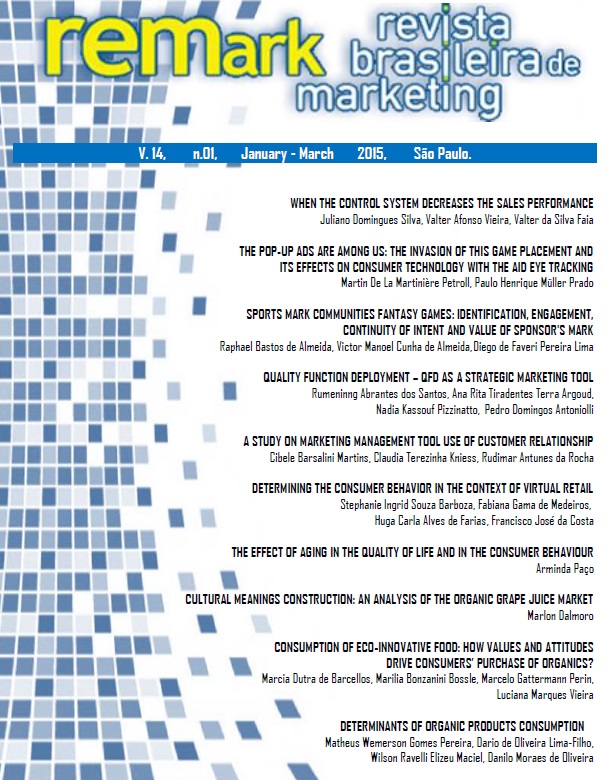Determinants of Organic Products Consumption
DOI:
https://doi.org/10.5585/remark.v14i1.2780Keywords:
Consumption Determinants, Organic Consumer, Socio Economic Profile, Multinomial Logit Model.Abstract
The increased environmental awareness and the growing desire for safer foods to health made the organic products category one of the most growing in the food sector. Thus, this study aimed to identify the most significant socioeconomic variables that influence the frequency of organic products consumption, and for that, it was based on a quantitative-descriptive study with a probability sample of 400 individuals, residing of the urban area of Campo Grande/MS, Brazil, responsible, alone or not, for food purchasing in family. As a tool for data collection, was used a structured questionnaire developed from socioeconomic variables and frequency of consumption of organic products. For the data analysis was performed statistical/econometric tests with the STATA 11.0 statistical software, using Multinomial Logit model (MNL), addition to verification of the explanatory variables effect on the probability of the consumption frequency levels of organic products through the Relative Risk Ratio (RRR), and was analyzed the Marginal Effect (ME) exercised by the explanatory variables in each frequency level of organic products consumption. The results showed that the explanatory variables gender, education and economic class were statistically significant in the probability of an individual belong to some of the levels of consumption (rare, occasional and frequent ) over never having consumed organic products, being higher frequency of consumption when the consumer is female, have higher education or is of higher economic class.








